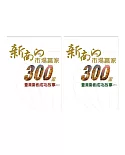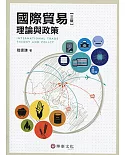俄羅斯近年受到西方經濟封鎖後,立即調整國內產業政策,運用土地優勢大力發展農業並取得很大成果,多項農產品位列全球前十大出口國,全球出口量排名第一、玉米第六、大豆第九,這是繼能源、礦產、武器外之的重要產品。近年俄羅斯更是大力開發遠東聯邦區,在海參威建設大型穀物倉儲運輸設施,由於擁有臨近亞洲之航程優勢,農產品在亞洲將甚具競爭力。亞洲鄰國日本、越南、菲律賓等國近年皆已先期佈局,開始自俄羅斯進口小麥等穀類農產品。
台灣耕地有限,穀類自給率僅約35%,除稻米外,小麥、玉米、大豆等完全仰賴進口供應。進口量小麥年約1.3百萬噸;大豆進口年約3百萬噸為全球第八大進口國;玉米進口年約5百萬噸為全球第9大進口國,進口貨源主要仰賴美洲,實宜增加對俄羅斯農業之了解及投資機會,以增加進口來源及議價空間。
由於新冠病毒疫情,糧食出口國出口態度已趨謹慎並多有惜售政策,使得FAO、WHO與WTO三大國際機構共同發表聲明,呼籲國際間加強合作,避免糧食危機及糧價高漲,值此之際的台灣更應及早佈局強化應變能力。著者在本書的附錄特別收集整理俄羅斯經濟地理地圖與相關的簡要說明,讓讀者更能了解俄羅斯豐富之土地與礦產資源及開發潛力。
作者介紹
作者簡介
黃清晏(Ching-Yen Huang)
留德。國內外知名專業經理人。
專業領域:石油化工、產業經濟、投資分析、策略規劃與經營管理。
現任
.台俄協會理事長。
經歷
.中國石油化學開發股份有限公司總經理。
.台灣肥料股份有限公司總經理。
著作
.《台俄經貿推廣與產業合作之商機》(合著)。
.《探索快速發展的俄羅斯農業與台灣的商機》(合著)。
戴志鴻(Chi-Hun Dai)
現任
.台俄協會副祕書長。
學歷
.淡江大學化學學士與碩士。
.美國奧本大學化學博士。
經歷
.台灣肥料股份有限公司助理副總經理。
.宏泰電工電材事業部副總經理。
著作
.《台俄經貿推廣與產業合作之商機》(合著)。
.《探索快速發展的俄羅斯農業與台灣的商機》(合著)。
黃清晏(Ching-Yen Huang)
留德。國內外知名專業經理人。
專業領域:石油化工、產業經濟、投資分析、策略規劃與經營管理。
現任
.台俄協會理事長。
經歷
.中國石油化學開發股份有限公司總經理。
.台灣肥料股份有限公司總經理。
著作
.《台俄經貿推廣與產業合作之商機》(合著)。
.《探索快速發展的俄羅斯農業與台灣的商機》(合著)。
戴志鴻(Chi-Hun Dai)
現任
.台俄協會副祕書長。
學歷
.淡江大學化學學士與碩士。
.美國奧本大學化學博士。
經歷
.台灣肥料股份有限公司助理副總經理。
.宏泰電工電材事業部副總經理。
著作
.《台俄經貿推廣與產業合作之商機》(合著)。
.《探索快速發展的俄羅斯農業與台灣的商機》(合著)。
目錄
推薦序/Sergey PETROV
1前言
2俄羅斯農業生產與出口
2.1俄羅斯穀物生產與出口
2.1.1小麥
2.1.2大麥
2.1.3玉米
2.1.4燕麥
2.1.5黑麥
2.1.6稻米
2.1.7蕎麥
2.2俄羅斯食用豆作物
2.2.1俄羅斯與全球食用豆作物產量
2.2.2俄羅斯與全球食用豆作物出口量
2.2.3俄羅斯各聯邦區食用豆產量、種植面積及出口量、值
2.3俄羅斯油籽與亞麻及甜菜特作
2.3.1葵花油籽
2.3.2大豆
2.3.3油菜籽
2.3.4甜菜
2.4俄羅斯馬鈴薯
2.4.1俄羅斯在全球馬鈴薯生產之地位與自給率
2.4.2俄羅斯各聯邦區馬鈴薯產量、產率與種植面積
2.5蔬菜
2.5.1全球與俄羅斯蔬菜產量、人均產量、與進出口
2.5.2俄羅斯各聯邦區蔬菜產量、與進出口
2.6水果
2.6.1俄羅斯各聯邦區水果與葡萄產量
2.6.2俄羅斯水果進出口
3俄羅斯的農業結構、特徵、成果與策略
3.1俄羅斯農業生產結構
3.1.1俄羅斯農糧作物、飼料作物、果物類生產結構
3.1.2俄羅斯糧食與豆類之生產結構
3.1.3俄羅斯農糧作物生產體系之生產結構
3.1.4 2019年俄羅斯各聯邦區生產結構分佈
3.1.5俄羅斯之種植面積結構分佈
3.1.6俄羅斯各聯邦區農耕種植面積與產率
3.2俄羅斯農業生產特點
3.3俄羅斯各農業產品於世界農業產品貿易之地位及重要性
3.4俄羅斯農業發展策略與目標
4台灣與俄羅斯農業互補合作具潛力之商機
4.1台灣穀類供給與進口依賴度
4.1.1台灣小麥進口及與俄羅斯貿易之商機探討
4.1.2台灣玉米進口及與俄羅斯貿易之商機探討
4.2台灣油籽仁與油籽類供給量及進口依賴度
4.2.1台灣自俄羅斯進口大豆貿易機會之探討
4.3台灣蕎麥、及紅豆、綠豆自俄羅斯進口商業機會之探討
4.4台灣水果出口俄羅斯機會之探討
5台俄雙方農業互補商機之檢視與建議
5.1分散糧食進口來源與管道
5.2協助及鼓勵業者與來源國出口商簽訂保證供應及採購合約,以保障我國優先進口權
5.3結論與淺見
參考文獻
附錄-俄羅斯經濟地理圖錄
1俄羅斯行政區地理圖
2俄羅斯地貌、地形、氣候
3俄羅斯土地運用、農地
4俄羅斯交通運輸
5俄羅斯土地、人口、人口密度、區域生產毛額、人均生產毛額
1前言
2俄羅斯農業生產與出口
2.1俄羅斯穀物生產與出口
2.1.1小麥
2.1.2大麥
2.1.3玉米
2.1.4燕麥
2.1.5黑麥
2.1.6稻米
2.1.7蕎麥
2.2俄羅斯食用豆作物
2.2.1俄羅斯與全球食用豆作物產量
2.2.2俄羅斯與全球食用豆作物出口量
2.2.3俄羅斯各聯邦區食用豆產量、種植面積及出口量、值
2.3俄羅斯油籽與亞麻及甜菜特作
2.3.1葵花油籽
2.3.2大豆
2.3.3油菜籽
2.3.4甜菜
2.4俄羅斯馬鈴薯
2.4.1俄羅斯在全球馬鈴薯生產之地位與自給率
2.4.2俄羅斯各聯邦區馬鈴薯產量、產率與種植面積
2.5蔬菜
2.5.1全球與俄羅斯蔬菜產量、人均產量、與進出口
2.5.2俄羅斯各聯邦區蔬菜產量、與進出口
2.6水果
2.6.1俄羅斯各聯邦區水果與葡萄產量
2.6.2俄羅斯水果進出口
3俄羅斯的農業結構、特徵、成果與策略
3.1俄羅斯農業生產結構
3.1.1俄羅斯農糧作物、飼料作物、果物類生產結構
3.1.2俄羅斯糧食與豆類之生產結構
3.1.3俄羅斯農糧作物生產體系之生產結構
3.1.4 2019年俄羅斯各聯邦區生產結構分佈
3.1.5俄羅斯之種植面積結構分佈
3.1.6俄羅斯各聯邦區農耕種植面積與產率
3.2俄羅斯農業生產特點
3.3俄羅斯各農業產品於世界農業產品貿易之地位及重要性
3.4俄羅斯農業發展策略與目標
4台灣與俄羅斯農業互補合作具潛力之商機
4.1台灣穀類供給與進口依賴度
4.1.1台灣小麥進口及與俄羅斯貿易之商機探討
4.1.2台灣玉米進口及與俄羅斯貿易之商機探討
4.2台灣油籽仁與油籽類供給量及進口依賴度
4.2.1台灣自俄羅斯進口大豆貿易機會之探討
4.3台灣蕎麥、及紅豆、綠豆自俄羅斯進口商業機會之探討
4.4台灣水果出口俄羅斯機會之探討
5台俄雙方農業互補商機之檢視與建議
5.1分散糧食進口來源與管道
5.2協助及鼓勵業者與來源國出口商簽訂保證供應及採購合約,以保障我國優先進口權
5.3結論與淺見
參考文獻
附錄-俄羅斯經濟地理圖錄
1俄羅斯行政區地理圖
2俄羅斯地貌、地形、氣候
3俄羅斯土地運用、農地
4俄羅斯交通運輸
5俄羅斯土地、人口、人口密度、區域生產毛額、人均生產毛額
序
推薦序
Dear reader,
I have willingly responded to the invitation to write a foreword to the study entitled “Exploring the rapid developing Russian agriculture and Taiwan’s Business opportunity” (探索快速發展的俄羅斯農業與台灣的商機).
The relevance of such analytical publications can hardly be exaggerated.
We are passing through challenging times of geopolitical and epidemiological turmoil, when short-term interests of international players tend to take precedence over objective needs to strengthen and facilitate global solidarity. In this context, any initiative that aims to look beyond the horizon and suggests new, relatively unexplored and therefore promising cooperation areas worth its weight in gold. What gives me a particular pleasure is that the paper we discuss today was prepared by Mr. Ching-Yen Huang (黃清晏) and Dr. Chi-Hun Dai (戴志鴻), whom I know as experienced professionals and talented researches.
As a starting point I would like to underline that the mutually-beneficial ties between Russia and Taiwan have experienced a rapid development in the past few years. We welcomed significant breakthroughs in almost all practical spheres, including the renewal of direct Moscow-Taipei and Vladivostok-Taipei air links (2019) and the liberalization of visa regimes (2018-2020) which helped to boost the number of mutual visits to the unprecedented level of nearly 51 000 last year, as well as the achievement of a historic high of 6.6 billion USD in bilateral trade (2018).
The latter deserves special mention, as it represents the widening degree of complementarity of our economies. Despite a small decline in 2019, the trend serves as a testament to the great potential Taiwan and Russia have yet to unleash. And here I would like to agree with the distinguished authors that one of the most apparent areas of focus in this regard is agriculture.
Due to the objective population and geographical characteristics, it is essential for Taiwan to invest in developing stable and diversified international food supply chains. Russia is an obvious cooperation partner in this sphere. In recent years my country has consolidated its positions as leading, credible and innovative agro-industrial producer with excellent potential for growth.
The facts speak for themselves. Grain harvests in Russia have exceeded
100 million tonnes for six years in a row, with the tentative forecast of 125 million tonnes for 2020 (the second-best result in nearly 30 years), including 82 million tonnes of wheat. The gross harvest of vegetables as well as fruit and berries, to name a few, set new records in 2019, standing at 14 and 3.5 million tonnes respectively.
Such performance allows Russia to steadily expand supplies to the global market. Nowadays, my country ranks first in the world in terms of wheat exports, second in terms of grain and sunflower oil exports, and third in terms of barley exports. It is also one of the ten largest suppliers of fish, seafood, soy, and soy processed products.
Importantly, Russia continues to keep up the dynamics of its agriculture sector, making investments in the projects in breeding, genetics, biotechnology and boosting the output of safe and high-quality products. These processes have not stopped even in the COVID-19 era. We have been able to ensure the smooth operation of agricultural organizations, fisheries, and processing industries during this difficult period, with government direct financial support to the sector exceeding 1.3 billion USD.
In 2020, Russia plans to supply agricultural products to 160 countries for the total amount of 25 billion USD. To compare: according to the last year’s statistics, our relevant exports to Taiwan was close to just 23 million USD, the level that certainly does not reflect the vast potential of bilateral cooperation in this field.
I personally believe that the existing opportunities for our cooperation in the agricultural sphere are overwhelming. I have no doubt that our Taiwanese partners will find our goods competitive, and our approach – friendly and professional.
Sergey PETROV
Representative of the Representative Office in Taipei for the
Moscow-Taipei Coordination Commission on Economic and Cultural Cooperation
Taipei, October 2020
Dear reader,
I have willingly responded to the invitation to write a foreword to the study entitled “Exploring the rapid developing Russian agriculture and Taiwan’s Business opportunity” (探索快速發展的俄羅斯農業與台灣的商機).
The relevance of such analytical publications can hardly be exaggerated.
We are passing through challenging times of geopolitical and epidemiological turmoil, when short-term interests of international players tend to take precedence over objective needs to strengthen and facilitate global solidarity. In this context, any initiative that aims to look beyond the horizon and suggests new, relatively unexplored and therefore promising cooperation areas worth its weight in gold. What gives me a particular pleasure is that the paper we discuss today was prepared by Mr. Ching-Yen Huang (黃清晏) and Dr. Chi-Hun Dai (戴志鴻), whom I know as experienced professionals and talented researches.
As a starting point I would like to underline that the mutually-beneficial ties between Russia and Taiwan have experienced a rapid development in the past few years. We welcomed significant breakthroughs in almost all practical spheres, including the renewal of direct Moscow-Taipei and Vladivostok-Taipei air links (2019) and the liberalization of visa regimes (2018-2020) which helped to boost the number of mutual visits to the unprecedented level of nearly 51 000 last year, as well as the achievement of a historic high of 6.6 billion USD in bilateral trade (2018).
The latter deserves special mention, as it represents the widening degree of complementarity of our economies. Despite a small decline in 2019, the trend serves as a testament to the great potential Taiwan and Russia have yet to unleash. And here I would like to agree with the distinguished authors that one of the most apparent areas of focus in this regard is agriculture.
Due to the objective population and geographical characteristics, it is essential for Taiwan to invest in developing stable and diversified international food supply chains. Russia is an obvious cooperation partner in this sphere. In recent years my country has consolidated its positions as leading, credible and innovative agro-industrial producer with excellent potential for growth.
The facts speak for themselves. Grain harvests in Russia have exceeded
100 million tonnes for six years in a row, with the tentative forecast of 125 million tonnes for 2020 (the second-best result in nearly 30 years), including 82 million tonnes of wheat. The gross harvest of vegetables as well as fruit and berries, to name a few, set new records in 2019, standing at 14 and 3.5 million tonnes respectively.
Such performance allows Russia to steadily expand supplies to the global market. Nowadays, my country ranks first in the world in terms of wheat exports, second in terms of grain and sunflower oil exports, and third in terms of barley exports. It is also one of the ten largest suppliers of fish, seafood, soy, and soy processed products.
Importantly, Russia continues to keep up the dynamics of its agriculture sector, making investments in the projects in breeding, genetics, biotechnology and boosting the output of safe and high-quality products. These processes have not stopped even in the COVID-19 era. We have been able to ensure the smooth operation of agricultural organizations, fisheries, and processing industries during this difficult period, with government direct financial support to the sector exceeding 1.3 billion USD.
In 2020, Russia plans to supply agricultural products to 160 countries for the total amount of 25 billion USD. To compare: according to the last year’s statistics, our relevant exports to Taiwan was close to just 23 million USD, the level that certainly does not reflect the vast potential of bilateral cooperation in this field.
I personally believe that the existing opportunities for our cooperation in the agricultural sphere are overwhelming. I have no doubt that our Taiwanese partners will find our goods competitive, and our approach – friendly and professional.
Sergey PETROV
Representative of the Representative Office in Taipei for the
Moscow-Taipei Coordination Commission on Economic and Cultural Cooperation
Taipei, October 2020
網路書店
類別
折扣
價格
-
新書95折$570



































